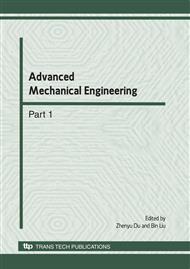p.1040
p.1046
p.1052
p.1056
p.1061
p.1065
p.1069
p.1075
p.1079
Study on Characteristic of Aqueous Polymer Isocyanate Curing Reaction
Abstract:
In this study the effect of isocyanate at room temperature on the curing behavior of PVAc was investigated. Crosslinking reactions are one of the most commonly used techniques to improve physical properties of PVAc. Commonly used crosslinkers for these reactions have high reaction activity such as isocyanate. Quantitative analysis of isocyanate with PVAc will be described in this report. A XPS technique has been established to analyze structure of crosslinking in PVAc. And physical property analysis will also be described.
Info:
Periodical:
Pages:
1061-1064
Citation:
Online since:
June 2010
Authors:
Keywords:
Price:
Сopyright:
© 2010 Trans Tech Publications Ltd. All Rights Reserved
Share:
Citation:


